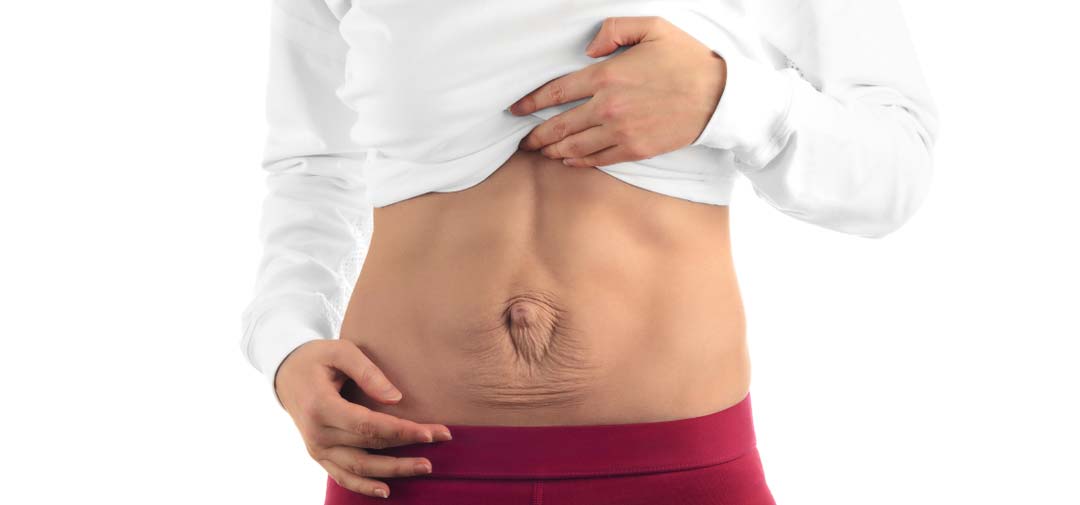Or Rectus Abdominis Diastasis

The Dreaded “Mummy Tummy”
Research has shown that 100% of women will have separation at 35 weeks gestation and 39% at 6 months postnatal.
Many pregnant and postnatal women have heard stories about the dreaded gap in the tummy muscles that will leave them with a “Mummy Tummy” after the baby arrives. Their response can be to start doing sit-ups and planks in the hope that they can close the gap but most people don’t realise that these are not the most appropriate exercises to do to target this issue. The other thing that most people don’t realise is that abdominal separation in pregnancy is normal and very common. Research has shown that 100% of women will have separation at 35 weeks gestation and 39% at 6 months postnatal.
Understanding the Abdominal Muscles
The abdominal muscles have 2 important layers
It is important to have an idea of the anatomy and function of the abdominal muscles to understand how best to deal with the gap safely. The abdominal muscles have 2 important layers, the superficial “movers” and the deep “stabilisers”. The Rectus Abdominis (six-pack muscle) are the most superficial of the “movers” and widen apart at the linea alba to accommodate the growth of the baby in pregnancy. The linea alba is the piece of fascia that runs from your breastbone to the pubic bone, and helps make up the six pack appearance. This is associated with increased laxity of the anterior abdominal wall and what can cause the doming or sinking in effect along the tummy. This is the area that we want to tighten and tone so that there is good tension rather than focusing on closing the “gap” all the time.
The deeper layer of tummy muscles is often called the core. These muscles work in sync to hold and support the body and to distribute forces when we are active. During pregnancy, these muscles get stretched too and are not as efficient at stabilising as before. It is these muscles that need real focus and rehabilitation.
WHAT CAN PHYSIOTHERAPY DO?
At Anatomy Physiotherapy, Suzanne carries out a detailed examination of the abdomen to assess its structure, function and activation patterns. She also looks at the body as a whole in terms of posture, breathing patterns, pelvic floor function and what activities/goals the patient has in mind. As with most things, the sooner an individualised, scalable treatment programme is put in place to strengthen the abdominal wall and address any other issues, the sooner the strength and control will return. However, it is never too late to be assessed or start on a rehabilitation plan for your muscle separation.

